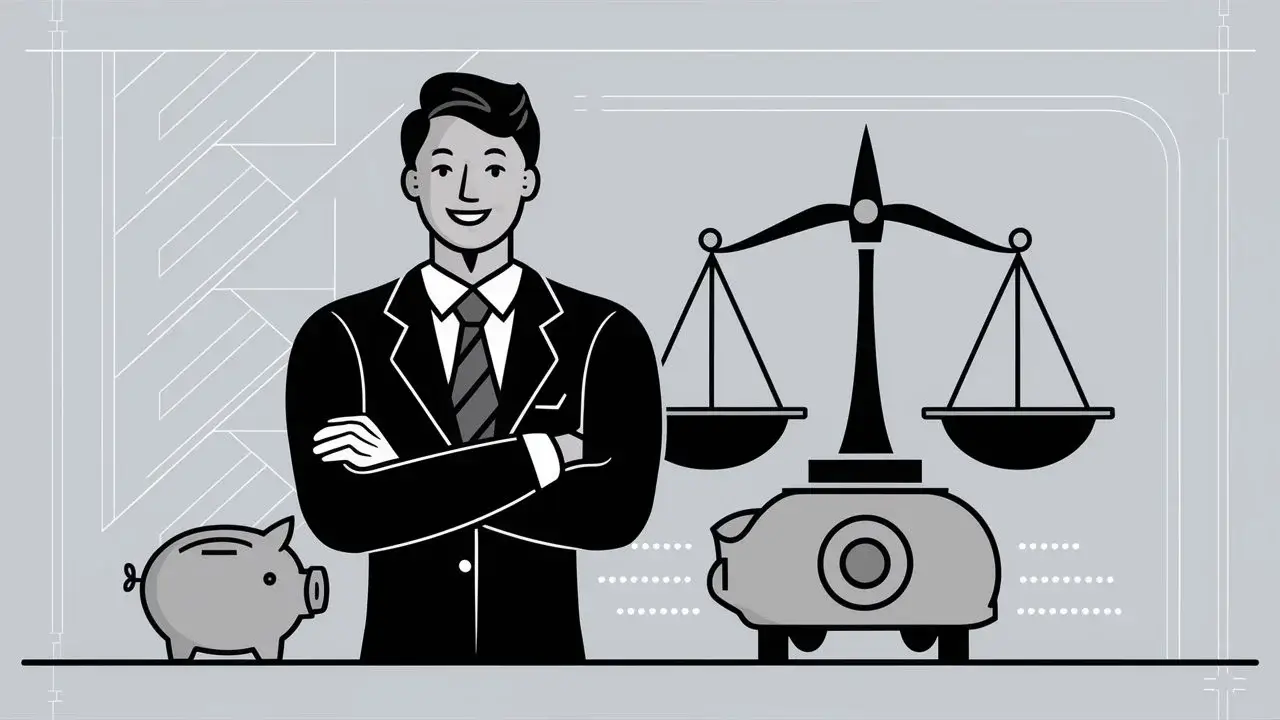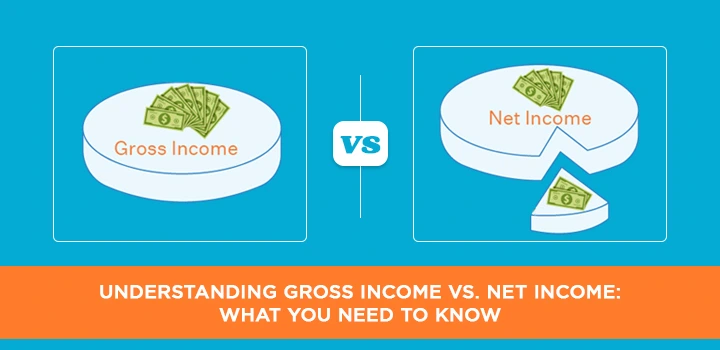-
Posted on: 24 Dec 2022

-
Mastering credit management is crucial for enhancing your creditworthiness and unlocking financial opportunities. This guide provides actionable credit management tips for credit enhancement, empowering you to build a stronger financial profile and secure better terms for loans and other credit facilities in 2025 and beyond.
Understanding Credit Enhancement
Credit enhancement refers to the strategies and actions taken by individuals or businesses to improve their credit profile and creditworthiness. This process involves actively managing credit accounts, demonstrating responsible financial behavior, and employing specific techniques to present a more favorable financial picture to lenders. The ultimate goal of credit enhancement is to reduce the perceived risk associated with extending credit, thereby leading to better interest rates, higher credit limits, and easier access to capital. In today's competitive financial landscape of 2025, a robust credit profile is not just a convenience; it's a necessity for achieving significant financial goals, whether personal or professional. Lenders evaluate creditworthiness based on several factors, including payment history, credit utilization, length of credit history, credit mix, and new credit inquiries. By focusing on these areas, individuals and businesses can systematically improve their standing.
Why Credit Enhancement Matters in 2025
The financial environment of 2025 presents unique challenges and opportunities. With fluctuating interest rates and evolving lending criteria, a strong credit score is more valuable than ever. For businesses, enhanced credit can mean the difference between securing vital funding for expansion or struggling to meet operational costs. For individuals, it can translate to owning a home, purchasing a vehicle, or even qualifying for better insurance premiums. The economic forecast for 2025 suggests a continued emphasis on financial stability and risk assessment by financial institutions. Therefore, proactive credit management and enhancement are not merely optional but strategic imperatives. A well-managed credit profile can also provide a buffer against unexpected economic downturns, offering greater financial resilience. Furthermore, in an era of increasing digitalization, credit scores are often used in contexts beyond traditional lending, impacting rental applications, utility services, and even employment opportunities in certain sectors.
Key Components of a Strong Credit Profile
A strong credit profile is built on several pillars. The most significant is a consistent history of on-time payments. This demonstrates reliability and reduces the perceived risk for lenders. Another critical factor is credit utilization, which measures the amount of credit you are using compared to your total available credit. Keeping this ratio low is paramount. The length of your credit history also plays a role; longer histories generally indicate more experience managing credit responsibly. The mix of credit accounts you hold—such as credit cards, installment loans, and mortgages—can also influence your score, showing a lender you can manage different types of debt. Finally, the number of recent credit inquiries and new accounts can signal increased risk, so managing these is also important. Understanding these components is the first step toward effective credit enhancement.
The Role of Credit Bureaus and Scores
Credit bureaus, such as Equifax, Experian, and TransUnion, are central to the credit enhancement process. They collect and maintain credit information for individuals and businesses, which is then used to generate credit reports. These reports are the foundation upon which credit scores are calculated. Credit scores, like the FICO score or VantageScore, are numerical representations of your creditworthiness, typically ranging from 300 to 850. A higher score indicates lower risk. Lenders use these scores to make rapid decisions about loan applications. Understanding how these scores are calculated—based on the factors mentioned above—allows for targeted efforts to improve your credit standing. Regular review of your credit reports is essential to identify any inaccuracies that could be negatively impacting your score.
Foundational Credit Management Practices
Before diving into advanced credit enhancement techniques, it's vital to establish and maintain solid credit management fundamentals. These practices form the bedrock of a healthy credit profile and are essential for long-term financial success. Neglecting these basics can undermine even the most sophisticated enhancement strategies.
1. Consistent On-Time Payments
The single most impactful factor in credit scoring is your payment history. Making all your debt payments on time, every time, is non-negotiable for credit enhancement. Even a single late payment can significantly damage your credit score. For 2025, lenders are increasingly scrutinizing payment patterns for any signs of financial distress.
Strategies for Ensuring On-Time Payments:
- Set Up Automatic Payments: Link your bank account to your credit accounts for automatic deductions. This is the most foolproof method.
- Utilize Calendar Reminders: Use your smartphone or a physical calendar to set reminders a few days before due dates.
- Pay More Than the Minimum: While paying the minimum keeps you current, paying more reduces your balance faster and demonstrates stronger financial management.
- Prioritize High-Interest Debts: If managing multiple payments becomes challenging, focus on paying off high-interest debts first to reduce overall financial burden.
2. Managing Credit Utilization Ratio (CUR)
Your Credit Utilization Ratio (CUR) is the amount of credit you're using divided by your total available credit. A high CUR signals to lenders that you might be overextended and at higher risk of default. Experts generally recommend keeping your CUR below 30%, and ideally below 10%, for optimal credit enhancement.
Tips for Lowering CUR:
- Pay Down Balances: The most direct way to lower CUR is to pay down outstanding balances on your credit cards.
- Request Credit Limit Increases: If you have a good payment history, ask your credit card issuer for a credit limit increase. This will lower your CUR without you spending more.
- Spread Balances Across Cards: If you have multiple credit cards, try to distribute your spending to avoid maxing out any single card.
- Avoid Maxing Out Cards: Even if you pay the balance in full by the due date, consistently carrying high balances can negatively impact your score.
3. Length of Credit History
A longer credit history generally indicates that you have more experience managing credit responsibly. Lenders see this as a positive sign. Therefore, closing old, unused credit accounts can sometimes be detrimental to your credit enhancement efforts.
Maintaining a Healthy Credit History:
- Keep Old Accounts Open: Unless an old account has significant annual fees or is being misused, consider keeping it open and making occasional small purchases that you pay off immediately.
- Avoid Unnecessary New Accounts: While new credit can be part of a strategy, opening too many accounts too quickly can shorten your average credit history length.
4. Credit Mix
Having a mix of different types of credit—such as revolving credit (credit cards) and installment loans (mortgages, auto loans, personal loans)—can positively influence your credit score. It shows lenders you can manage various forms of debt. However, this factor is less critical than payment history and utilization.
Balancing Your Credit Mix:
- Don't Open Accounts Solely for Mix: Focus on your genuine credit needs rather than opening accounts just to diversify your credit mix.
- Consider a Small Personal Loan: If you primarily have credit cards, a small, manageable installment loan paid off diligently can help diversify your credit mix.
5. Monitoring Your Credit Reports
Regularly reviewing your credit reports from the major bureaus (Equifax, Experian, TransUnion) is crucial. You are entitled to a free credit report from each bureau annually via AnnualCreditReport.com. This allows you to check for errors, fraudulent activity, and understand your current credit standing.
Steps for Effective Credit Report Monitoring:
- Obtain Your Reports: Request your free reports at least once a year.
- Scrutinize All Information: Check for accuracy in personal information, account details, payment history, and inquiries.
- Dispute Errors Promptly: If you find any inaccuracies, dispute them immediately with the credit bureau and the creditor.
- Watch for Identity Theft: Be vigilant for accounts you don't recognize, which could indicate identity theft.
Implementing these foundational practices consistently is the first and most important step in any credit enhancement strategy for 2025. They build a stable platform upon which more advanced techniques can be applied for maximum impact.
Strategic Credit Enhancement Techniques
Once the foundational credit management practices are in place, you can implement more strategic techniques to actively enhance your credit profile. These methods are designed to accelerate credit improvement and unlock better financial opportunities.
1. Become an Authorized User
Becoming an authorized user on a credit card account held by someone with excellent credit can be a powerful credit enhancement tool. The primary account holder's positive payment history and low utilization may be reflected on your credit report, potentially boosting your score.
Considerations for Authorized Users:
- Choose Wisely: Only agree to be an authorized user for someone you trust implicitly with their finances. Their negative activity will also appear on your report.
- Understand Reporting: Ensure the credit card issuer reports authorized user activity to the credit bureaus. Not all do.
- Monitor Your Report: Verify that the positive activity is indeed being reported on your credit report.
2. Credit-Builder Loans and Secured Credit Cards
For individuals with limited or poor credit history, credit-builder loans and secured credit cards are invaluable tools for establishing or rebuilding credit.
Credit-Builder Loans:
These are small loans designed specifically to help people build credit. The loan amount is typically held in an account by the lender and released to you after you've made all the payments. Your on-time payments are reported to credit bureaus.
Secured Credit Cards:
With a secured credit card, you provide a cash deposit that acts as collateral. This deposit usually equals your credit limit. Responsible use and on-time payments are reported to credit bureaus, helping you build a positive credit history.
Best Practices for Credit Builders:
- Use Responsibly: Treat these tools as you would any other credit product – make payments on time and keep balances low.
- Transition to Unsecured Products: Once you've demonstrated responsible behavior, aim to graduate to unsecured credit cards or loans.
3. Negotiating with Creditors
If you are facing financial difficulties or have past-due accounts, negotiating with your creditors can be a proactive step. While this might involve settling for less than the full amount owed or setting up a payment plan, it can prevent further damage to your credit score.
Negotiation Strategies:
- Be Honest and Proactive: Contact creditors as soon as you anticipate difficulty making payments.
- Propose a Solution: Suggest a payment plan or a settlement amount.
- Get Agreements in Writing: Ensure any agreed-upon terms are documented to avoid future disputes.
Note: While settling a debt for less than the full amount may improve your ability to manage finances, it can still be reported as a negative mark on your credit report, though often less damaging than a complete default.
4. Credit Monitoring Services
While not directly enhancing your credit score, credit monitoring services are crucial for credit enhancement by providing timely alerts about changes to your credit report. This includes new accounts, inquiries, and potential fraudulent activity. Early detection allows for swift action.
Benefits of Monitoring:
- Fraud Detection: Quickly identify and address unauthorized activity.
- Score Tracking: Monitor your credit score's progress over time.
- Error Identification: Spot and correct inaccuracies on your credit reports.
5. Understanding and Optimizing Credit Inquiries
Each time you apply for new credit, a "hard inquiry" is placed on your credit report. Too many hard inquiries in a short period can slightly lower your credit score, as it may suggest you are seeking a lot of credit quickly, which lenders perceive as risky.
Managing Inquiries:
- Apply Strategically: Only apply for credit when you genuinely need it.
- Rate Shop Within Timeframes: For certain types of loans (like mortgages or auto loans), credit scoring models often treat multiple inquiries for the same type of loan within a short period (e.g., 14-45 days) as a single inquiry.
- Distinguish Hard vs. Soft Inquiries: Soft inquiries (e.g., checking your own credit score, pre-qualification offers) do not affect your credit score.
6. Utilizing Balance Transfer Strategies (with Caution)
For individuals carrying high-interest credit card debt, a balance transfer to a card with a 0% introductory APR can be a powerful tool for debt reduction and, consequently, credit enhancement by lowering utilization.
Balance Transfer Considerations:
- Beware of Fees: Balance transfer cards often charge a fee (typically 3-5% of the transferred amount).
- Understand the Intro Period: Know exactly how long the 0% APR period lasts and what the rate will be afterward.
- Pay Down Aggressively: Aim to pay off the transferred balance before the introductory period ends to avoid high interest charges.
- Avoid New Purchases: Ideally, don't use the new card for purchases during the introductory period, as these may accrue interest at the standard rate.
7. Credit Coaching and Financial Advice
For complex situations or for those seeking a structured approach, consulting with a reputable credit counselor or financial advisor can provide personalized guidance and strategies tailored to your specific circumstances. Ensure they are non-profit and accredited.
These strategic techniques, when applied judiciously alongside foundational practices, can significantly accelerate your credit enhancement journey in 2025, leading to improved financial health and access to better credit opportunities.
Leveraging Credit Enhancement for Growth
Achieving credit enhancement is not merely about improving a score; it's about unlocking tangible financial benefits that fuel personal and business growth. In 2025, a strong credit profile is a powerful asset that can be strategically leveraged.
1. Securing Better Loan Terms
The most direct benefit of credit enhancement is the ability to secure loans with more favorable terms. This includes lower interest rates, longer repayment periods, and reduced fees.
Impact on Borrowing Costs:
Consider two individuals applying for a $20,000 auto loan over 60 months in 2025.
Credit Score Range Estimated APR Monthly Payment Total Interest Paid Excellent (780+) 5.5% $392 $3,520 Good (670-739) 8.0% $415 $4,900 Fair (580-669) 12.0% $445 $6,700 As the table illustrates, even a few percentage points difference in APR, driven by creditworthiness, can save thousands of dollars in interest over the life of the loan. This saved capital can be reinvested or used for other financial goals.
2. Expanding Business Funding Options
For businesses, enhanced credit management is critical for accessing capital needed for expansion, innovation, and operational stability. A strong business credit profile can open doors to:
- SBA Loans: Often have more favorable terms and government backing.
- Lines of Credit: Providing flexible access to funds for working capital.
- Term Loans: For significant investments in equipment or property.
- Better Supplier Terms: Suppliers may offer more generous payment terms to businesses with proven credit reliability.
In 2025, with businesses facing supply chain uncertainties and evolving market demands, readily available and affordable financing is a significant competitive advantage.
3. Improving Personal Financial Flexibility
Beyond loans, a strong credit profile enhances personal financial flexibility in numerous ways:
- Easier Rental Approvals: Landlords often check credit scores, and a good score can make securing desirable rental properties easier.
- Lower Insurance Premiums: In many states, insurance companies use credit-based insurance scores to help determine premiums for auto and home insurance. A better score can lead to lower rates.
- Utility Deposits Waived: Utility companies may waive security deposits for customers with strong credit histories.
- Better Credit Card Rewards: Premium credit cards offering substantial rewards (cash back, travel points) are typically reserved for individuals with excellent credit.
4. Building Investment Capacity
For investors, credit enhancement can indirectly boost investment capacity. Lower borrowing costs mean more capital is available for investment. Furthermore, a solid financial reputation can be advantageous when seeking investment partnerships or private funding.
Example: Real Estate Investment
An investor looking to purchase a rental property in 2025 might aim for a lower mortgage rate through credit enhancement. A 1% reduction in the mortgage rate on a $300,000 loan over 30 years can save the investor approximately $60,000 in interest over the loan's term, significantly increasing the property's profitability.
5. Enhancing Negotiating Power
When your credit is strong, you are in a better negotiating position with lenders and service providers. They are more eager to earn your business and may be willing to offer better terms or concessions. This leverage can be applied across various financial transactions.
6. Achieving Financial Milestones Faster
Whether it's buying a home, starting a business, or funding higher education, credit enhancement accelerates the timeline. By qualifying for better terms and easier approvals, individuals and businesses can reach their financial goals sooner, gaining a crucial advantage in a dynamic economic climate like that of 2025.
Leveraging credit enhancement strategically transforms a good credit score from a passive indicator into an active driver of financial success and growth.
Common Pitfalls and Solutions
Navigating credit management and enhancement can be complex, and several common pitfalls can derail even the best intentions. Understanding these challenges and knowing how to overcome them is crucial for sustained success.
1. Pitfall: Ignoring Small Debts or Bills
Even small, seemingly insignificant debts or late payments can accumulate and negatively impact credit scores. Ignoring them can lead to collections and further damage.
Solution:
Treat all financial obligations with the same seriousness. Utilize automated payment systems or calendar reminders for all bills, regardless of size. If a debt is problematic, address it proactively with the creditor.
2. Pitfall: Closing Old Credit Accounts
As mentioned earlier, closing older credit accounts can shorten your average credit history length and reduce your total available credit, potentially increasing your credit utilization ratio.
Solution:
Unless there's a compelling reason (like high annual fees), keep older, well-managed credit accounts open. Make small, occasional purchases on them and pay them off immediately to keep them active.
3. Pitfall: Applying for Too Much Credit at Once
Multiple credit applications in a short period trigger numerous hard inquiries, which can lower your credit score. This can make you appear desperate for credit.
Solution:
Apply for new credit only when necessary. Space out your applications, especially for major credit products like mortgages or auto loans. Utilize pre-qualification tools where available, as these typically involve soft inquiries.
4. Pitfall: Not Checking Credit Reports for Errors
Inaccurate information on your credit report—such as incorrect payment statuses, accounts you don't recognize, or wrong personal details—can unfairly lower your score.
Solution:
Obtain your free credit reports annually from AnnualCreditReport.com. Review them meticulously for any discrepancies and dispute errors promptly with the credit bureaus and the relevant creditors.
5. Pitfall: Relying Solely on Credit Scores Without Understanding the Report
A credit score is a snapshot, but the credit report provides the detailed history. Focusing only on the score without understanding the underlying data can lead to misdirected efforts.
Solution:
Always review your full credit report. Understand which factors are contributing most to your score (both positively and negatively) to tailor your credit management strategy effectively.
6. Pitfall: Mismanaging Balance Transfers
Transferring balances can be beneficial, but failing to pay off the debt before the introductory 0% APR period ends can result in high interest charges, negating the benefits and potentially worsening your financial situation.
Solution:
Create a strict payment plan to eliminate the transferred balance before the promotional period expires. Avoid making new purchases on the balance transfer card unless you can pay them off immediately. Factor in balance transfer fees when calculating the overall cost.
7. Pitfall: Falling for Credit Repair Scams
Many companies prey on individuals seeking credit improvement, promising quick fixes that are often illegal or ineffective. Legitimate credit counseling services exist, but beware of guarantees.
Solution:
Be skeptical of companies that guarantee to remove accurate negative information from your credit report or charge high upfront fees. Focus on legitimate credit counseling agencies (often non-profit) or implement self-managed strategies. Remember, negative information generally stays on your report for seven years.
8. Pitfall: Using Credit Cards for Everyday Expenses Without a Repayment Plan
While convenient, using credit cards for daily spending without a clear plan to pay them off can lead to accumulating debt and high credit utilization.
Solution:
Treat credit cards as a payment tool, not as an extension of your income. If you use a credit card for daily expenses, ensure you have the funds readily available to pay the balance in full by the due date.
9. Pitfall: Emotional Financial Decisions
Impulse purchases, panic-driven debt consolidation, or closing accounts out of frustration can lead to poor credit management outcomes.
Solution:
Approach financial decisions with a clear head and a plan. Educate yourself on the long-term implications of your choices. Seek advice from trusted sources if you feel overwhelmed or emotional.
By being aware of these common pitfalls and implementing the suggested solutions, individuals and businesses can navigate the complexities of credit management more effectively, ensuring their efforts toward credit enhancement are successful and sustainable through 2025 and beyond.
Future Trends in Credit Management
The landscape of credit management and enhancement is continuously evolving, driven by technological advancements, changing economic conditions, and shifting consumer behaviors. Staying ahead of these trends is crucial for maintaining a competitive edge and optimizing creditworthiness in the coming years.
1. Increased Reliance on Alternative Data
Beyond traditional credit reports, lenders are increasingly looking at alternative data sources to assess creditworthiness. This includes rent payments, utility bill payments, telecommunication bills, and even cash flow data from bank accounts. For 2025 and beyond, this trend is expected to accelerate, offering new avenues for credit enhancement, especially for those with thin credit files.
Implications:
- Broader Access to Credit: Individuals previously underserved by traditional credit scoring may find it easier to qualify for credit.
- Proactive Data Management: Consumers may need to actively ensure their consistent payment of bills like rent and utilities is reported to credit bureaus or data aggregators.
2. AI and Machine Learning in Credit Scoring
Artificial intelligence (AI) and machine learning (ML) are transforming credit scoring models. These technologies can analyze vast datasets more efficiently and identify complex patterns that traditional models might miss, potentially leading to more accurate and dynamic credit assessments.
Implications:
- More Personalized Credit Offers: AI can tailor credit products and terms to individual risk profiles with greater precision.
- Faster Decision-Making: Loan application processing times are likely to decrease further.
- Ethical Considerations: Ensuring fairness and avoiding algorithmic bias in AI-driven credit decisions will be a critical focus.
3. Enhanced Digitalization and Fintech Integration
Fintech companies are at the forefront of innovation in credit management. Mobile apps, online platforms, and digital payment solutions are streamlining credit applications, monitoring, and management processes.
Implications:
- Seamless User Experience: Managing credit and applying for new products will become more intuitive and accessible.
- Rise of Embedded Finance: Credit products may be integrated directly into non-financial platforms (e.g., point-of-sale financing).
- Increased Competition: Traditional financial institutions will need to innovate to keep pace with agile fintech offerings.
4. Focus on Financial Wellness and Education
There's a growing recognition of the link between financial wellness and credit health. Lenders and financial institutions are increasingly offering resources and tools to help consumers improve their financial literacy and manage their credit responsibly.
Implications:
- Preventative Measures: Emphasis will shift towards helping consumers avoid debt problems rather than just managing them.
- Holistic Financial Planning: Credit management will be viewed as part of a broader financial well-being strategy.
5. The Evolving Role of Credit Bureaus
Credit bureaus are adapting by incorporating more data types and offering more sophisticated analytics. They are moving beyond just reporting to providing insights and tools for both consumers and lenders.
Implications:
- Comprehensive Credit Profiles: Future credit reports may offer a more complete picture of an individual's financial behavior.
- Greater Consumer Control: Tools may emerge allowing consumers more direct control over how their data is used.
6. Cybersecurity and Data Privacy
As more financial data becomes digitized and shared, robust cybersecurity measures and stringent data privacy regulations will become even more critical. Protecting sensitive credit information will be paramount.
Implications:
- Increased Investment in Security: Financial institutions will invest heavily in advanced security protocols.
- Regulatory Scrutiny: Governments worldwide will likely strengthen data protection laws.
By understanding and preparing for these future trends, individuals and businesses can proactively adapt their credit management strategies, ensuring they remain well-positioned to leverage credit enhancement for continued success and financial resilience in the years ahead.
Conclusion
Mastering credit management is an ongoing journey, but the rewards of effective credit enhancement are substantial. By diligently implementing foundational practices like timely payments and low credit utilization, and strategically employing techniques such as becoming an authorized user or utilizing credit-builder tools, you can significantly bolster your creditworthiness. In the dynamic financial landscape of 2025, a strong credit profile translates directly into better loan terms, expanded business funding options, and greater personal financial flexibility. Vigilance in monitoring your credit reports for errors and awareness of common pitfalls are essential to safeguard your progress. As the future of credit management embraces alternative data and AI, proactive adaptation will be key. Prioritize consistent, responsible financial behavior to build a robust credit foundation that empowers your financial goals and secures your long-term prosperity.











